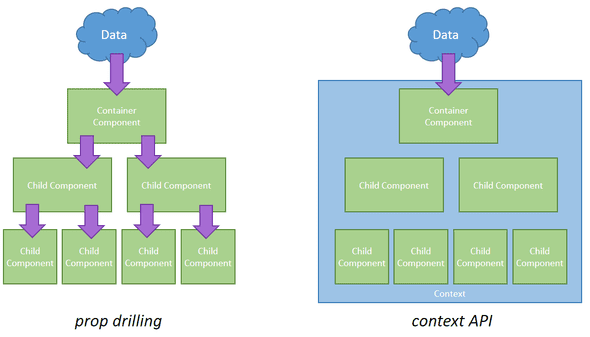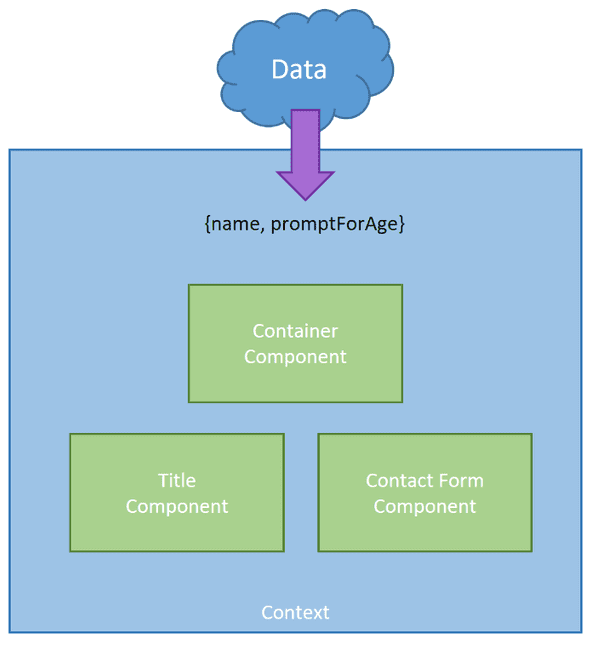With React 16.3 recently released I thought it was time to take a look at the new context API. The new context API does what it says on the tin - it allows components to get data from a context rather than from props. It prevents having to pass props down through child component through child component … i.e. “prop drilling”.
So, let’s give this try for allowing a couple of components to consume data about a tenant in a multi-tenant app. The first child component will show the name of the tenant. The second child component will show a form capturing a name and age. Whether the age is captured depends on a promptForAge flag in the tenant.
Container component
The shell of our container component is below. It gets the tenant data from a web service and puts it in its state. We are referencing child components Title and ContactForm but we aren’t using the new context API yet.
class App extends Component {
state = {
tenant: null
}
componentDidMount() {
fetch("http://localhost:21246/api/tenant")
.then((response) => {
return response.json();
})
.then(data => {
this.setState({ tenant: data });
}).catch(error => {
console.log(error);
});
}
render() {
const {tenant} = this.state;
return (
{tenant &&
<div className="container">
<Title />
<ContactForm />
</div>
}
);
}
}
Let’s create our context. We’ll call it TenantContext.
#react


